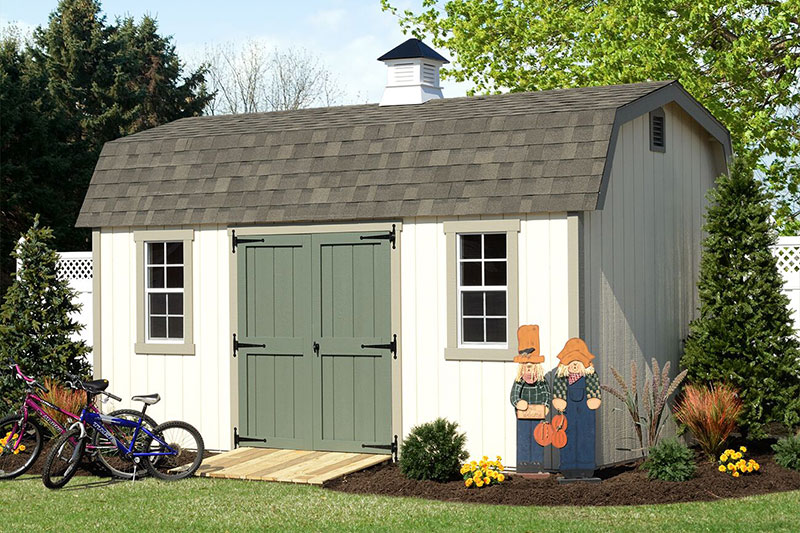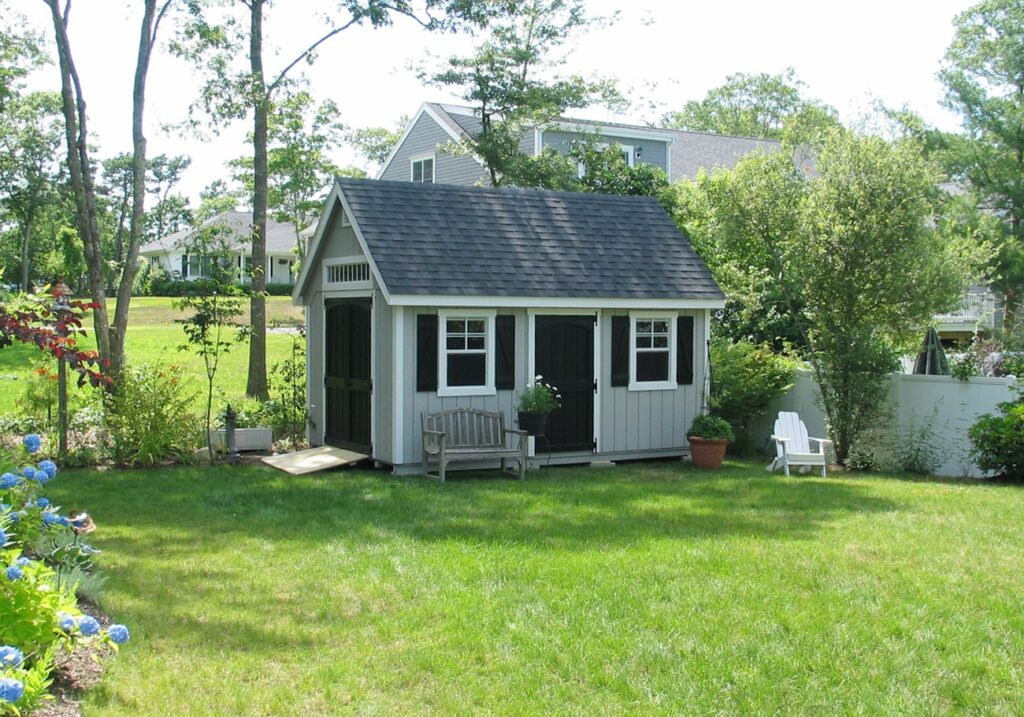
Your backyard shed may not see much action during the winter months. Your lawnmower, gardening tools, and pool toys are packed away and won’t be used again for months to come. But, you still need to give your shed attention, because now is the time to winterize your shed. A few simple maintenance and winter pest control tasks will go a long way to protect all the items stored within your shed as the weather turns colder. Here is how to winterize a shed in five steps we recommend for winterizing your backyard shed.
1. Clean Your Shed’s Exterior
Penn Dutch sheds are constructed of vinyl or wood, both highly-durable materials, so they require little maintenance throughout the year. But you should still clean the exterior of your shed annually, and fall is a great time of year to get this done.
- General Cleaning — Use a garden hose, or power washer if you need a little more force, to clean off the exterior of your shed. For stubborn dirt, use a cleaning solution of dish soap and warm water.
- Mold or Mildew — Summer’s heat and humidity can cause mildew or mold to build up on your shed’s exterior, which looks really unattractive. If a good power cleaning doesn’t remove mold or mildew spots, use white vinegar. The acid in vinegar, along with some scrubbing, can break down these stains.
- Tree Sap — If your shed is positioned under maple trees, you may find that your shed is covered with tree sap. As sap hardens, it becomes very tricky to remove, but you don’t need to resort to overly harsh cleaners. Oil soap or white vinegar applied to the sap can break it down, making it easier to remove using a soft brush.
2. Clear Out the Clutter
The inside of your shed is the perfect shelter for small critters and insects looking for a warm place to spend the winter. Clearing out the clutter is an important winter pest control step. A clean shed is an unwelcoming shed for pests!
- Sweep out any leaves or yard debris that were tracked inside. Otherwise, small animals and insects may use them as nesting materials.
- If you store birdseed or pet food inside your shed, make sure it’s stored in a sealed, air-tight container. If left loose, it provides a food source that draws pests inside.
Additionally, if you’re storing items in cardboard boxes, now is the time to switch over to plastic bins. Cardboard can break down if stored in damp areas, get moldy, and be chewed through by rodents and insects.
3. Inspect the Roof
Heavy winds or general wear and tear can lead to loose shingles on your shed’s roof. Winterize your shed by inspecting for any missing or loose shingles, as well as any holes in your roof. Not only will this protect your shed from leaks when the rain and snow arrive in full force, but it will also keep birds from entering and nesting in your shed.
4. Check Your Windows & Doors
When winterizing your backyard shed, also check the weather stripping around the windows, entry doors, and overhead doors. Water-tight entry points will prevent leaking as snow and rain enter the forecast and ensure that moisture won’t ruin the items stored inside. Sealing off these access points will also keep spiders and insects out of your shed.
5. Reinforce the Foundation
If your shed is elevated, you may want to reinforce the space between your shed floor and the ground. The smallest holes or cracks in your floor can be an access point for mice, squirrels, raccoons, groundhogs, and more. Cover the exposed space with chicken wire or sections of trellis to keep these pests out.
Still Need An Upgrade?
Visit our wide selection of sheds to find inspiration for a brand-new wood or vinyl shed for your home.

